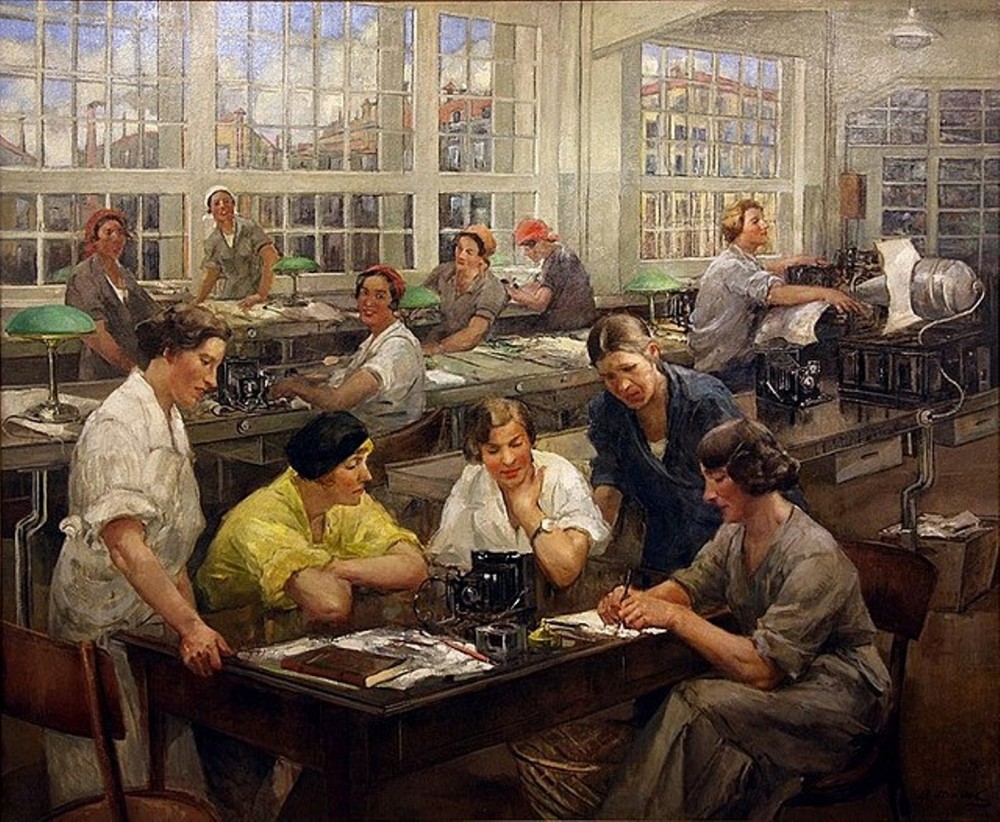
In the submitted article, the authors considered and analyzed the genre features of Soviet fine art during the “Thaw” and “Stagnation” periods during the times of the leaders of the Soviet Union, M. Khrushchov and L. Brezhnev, respectively. In particular, attention was focused on socialist realism as the main genre of Soviet reality. The influence of the Soviet communist propaganda, built around the fine arts, was also investigated and its propaganda influence on the named art trend was highlighted. It was determined that during the Khrushchov Thaw, the period of development of Soviet propaganda was marked by the preservation of the system of socialist realism, but with a new, more loyal approach that took into account political changes in the state with the disclosure of greater attention to everyday life. On the one hand, at this time, a clear historicity is being built, which is reflected, for example, in the painting “October Wind”. She combines the difficult past with optimistic modernity in the work “Warm Day”. This testifies to the attempts of the ideological apparatus of the totalitarian state to adapt socialist realism to new realities and ideological requirements. Thus, after the totalitarian era of J. Stalin, the liberalization of the communist system and culture, caused by the initiatives of M. Khrushchov, was not accompanied by a complete break with the system of total control that arose during the previous decades. At the same time, in the age of Brezhnev’s stagnation, the genre of socialist realism undergoes the final conservation of its inherent features. Therefore, the article also draws attention to the influence of domestic politics and the struggle with Western genres on the evolution of socialist realism. In particular, during the avant-garde exhibition, the critic M. Khrushchov defines the genre features of socialist realism, pointing out the need to preserve social reality. During the period of stagnation, which was marked by the period of L. Brezhnev’s reign, there is an increase in demonstrations, such as, for example, “Bulldozer Show”, which also affects the formation of genre features of socialist realism. Therefore, the researchers came to the conclusion that political changes within the country, as well as the struggle against “deviations” in art, became the main themes and orientations of socialist realism in that period. This determined its development and dynamics in accordance with changes in the political landscape. The fight against the so-called “perverted art” determined the internal context of the genre and contributed to the maintenance of ideological purity in art, its unification and screening of manifestations unacceptable to the Soviet regime. The article defines the evolution of the genre features of socialist realism in the Soviet Union, noting its adaptation to political and ideological changes during the “Thaw” and “Stagnation” periods. The authors of the presented study highlight the important stages of this process, paying attention to the influence of internal politics and external challenges on the formation of visual arts in Soviet society. Therefore, it was determined that the peculiarity of socialist realism in the fine art of the USSR was the need to establish it as a single, legalized method controlled by the authorities for reproducing the ideology of a “developed” socialist society.
Source: Hrytsenko A.P., Prokopchuk V.S., Chumachenko O.A. (2023). Genre features of Soviet visual art during the “Vidlyha” and “Zastii” periods. Sumy historical and archival journal. №XLI: 23-32
Source web-site: https://shaj.sumdu.edu.ua/wp-content/uploads/2023/12/3_Hrytsenko_Prokopchuk.pdf
Number of views: 1353